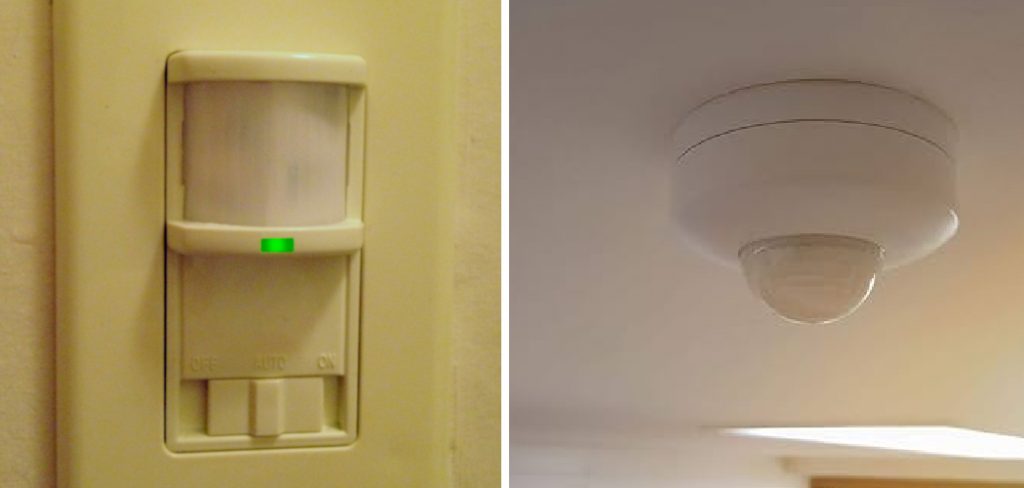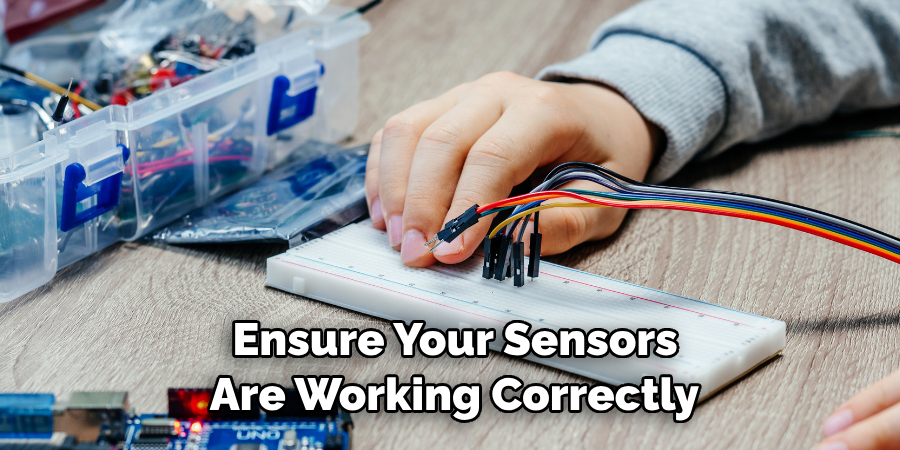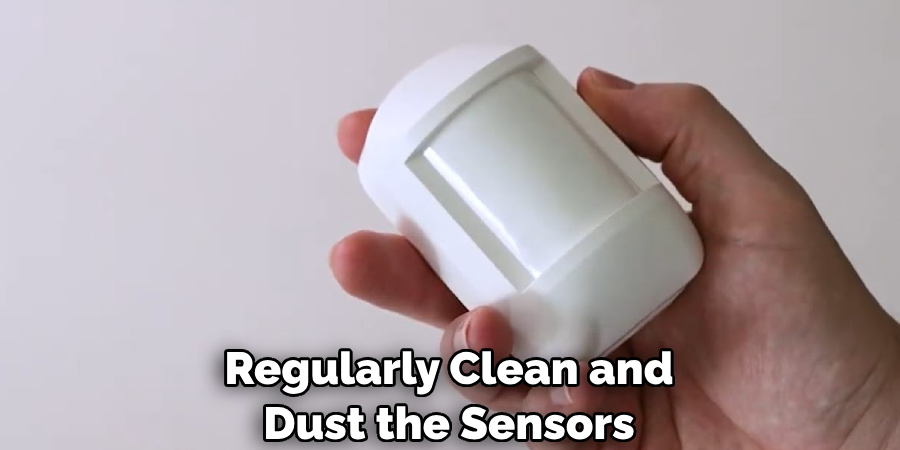Occupancy sensors are a modern solution for businesses and homeowners who want to save energy. They come in two types: passive infrared (PIR) and ultrasonic. The PIR type detects motion with an infrared sensor, while the ultrasonic model uses soundwave technology to detect movement in its field of view. Both have advantages and disadvantages, so it’s important to consider your particular needs when deciding.

The main advantage of using occupancy sensors is that they are designed to capture movement and presence in a room. This can help you reduce energy costs by automatically turning off lights or air conditioning when the room is unoccupied for extended periods.
Additionally, they can trigger alarms or security cameras if motion is detected. In this blog post, You will learn in detail how do occupancy sensors work.
Step-by-step Instructions for How Do Occupancy Sensors Work
Step 1: Inspect the Area
Inspect the area or room that needs to be monitored for occupancy. Decide what sensors are needed (e.g., motion, sound, infrared) and where each should be placed. Next, mount the sensor at an appropriate height for optimal movement detection in the space. Make sure there are no obstructions that can interfere with the sensor’s operation.
Step 2: Connect Wiring and Cables
Then, connect the wiring and cables according to the manufacturer’s instructions. It is important to use the correct type of wire for each installation to ensure proper operation of the sensors. Once installed, configure the settings according to what is needed. This can include setting an occupancy delay, sensitivity levels, and other parameters.

Step 3: Set Timer
If a timer function is needed, then make sure to set it up according to the desired schedule. This may vary from one application to another depending on usage needs. Then, set the power source to provide the appropriate voltage and current for the sensor. This is typically done using an AC adapter or battery.
Step 4: Connect the Sensor to the Control System
Next, connect the occupancy sensor to a central control system such as a home . This will allow it to communicate with other devices in the system for monitoring and automation purposes. After everything is connected, test the sensor to ensure it is operating correctly. This can be a simple visual check or more in-depth testing using specialized tools.
Step 5: Fine Tuning Settings
Finally, fine-tune the settings if needed for increased accuracy and reliability. This may include changing the delay time, sensitivity levels, or other configuration options. Once everything is set up and working properly, monitor the sensor’s performance to ensure reliability and accuracy. Make adjustments if necessary for better operation.
Occupancy sensors can be a great way to save energy and money by ensuring lights and other equipment are only being used when needed. Knowing how to install and configure these sensors properly is essential for getting the most out of them.
6 Safety Tips for How Do Occupancy Sensors Work

- Check and verify your occupancy sensors regularly. It is important to ensure your sensors are working correctly and not misinterpreting their readings.
- Choose appropriate locations for your occupancy sensors. Place the sensors in an area where people are likely to move around regularly, such as near entrances, exits, and areas with large amounts of foot traffic.
- Ensure your occupancy sensors are not in direct sunlight or near other heat sources. Excessive heat can cause the sensors to malfunction, resulting in false readings and inaccurate results.
- Avoid placing the sensors too close to mechanical equipment such as fans or air conditioners. These items could create a false positive due to the movement of air they produce.
- Ensure your occupancy sensors are free from dust and dirt. This will help ensure they provide accurate readings over a longer time.
- Keep wires or cords away from the sensors to avoid interference with their emitted signals.
Occupancy sensors can be invaluable for detecting movement in an area, but it is important to know how to use them correctly. By following these six safety tips, you can ensure that your occupancy sensors work as intended and provide accurate results.
What is an Occupancy Sensor?
An occupancy sensor is a device that enables users to detect when a room is occupied or unoccupied. This type of sensor detects movement via infrared, ultrasonic, passive infrared (PIR), or microwave signals. When the sensors detect motion in the monitored area, they can trigger lighting systems to turn on and off and control heating and cooling systems.
Occupancy sensors are typically used to save energy by automatically turning off lights, air conditioning, and other systems when no one is in the room. They can also be used as security measures, detecting movement when a room or area should be unoccupied. Occupancy sensors have become increasingly popular due to their ability to lower energy costs and provide safety for businesses and homes.
What Are the Benefits of Using an Occupancy Sensor?
Occupancy sensors provide some benefits to businesses and households. They are energy-efficient, as they automatically turn off systems when no one is in the room. This can lead to significant savings on electricity bills. Occupancy sensors also provide an enhanced level of security by detecting movement in areas that should be unoccupied, like warehouses or offices.

Additionally, these sensors are also beneficial for workplace comfort. By automatically detecting when occupants enter and leave a room, the sensors can adjust the temperature to the ideal level for that person at any given time.
Finally, occupancy sensors can simplify building management by providing real-time data on occupancy levels throughout a facility. This can help managers identify areas where energy savings could be achieved and track overall usage patterns.
What Safety and Security Features Do Occupancy Sensors Offer?
Occupancy sensors are an invaluable safety and security tool, providing physical protection and peace of mind. Occupancy sensors can detect the presence of people in a given area and trigger lights or other systems automatically as needed. This can help ensure that personnel are always safe, secure, and accounted for.
Furthermore, occupancy sensors make it easy to maintain efficient energy usage. By detecting when no one is in a room, these sensors can automatically turn off lights or other electrical devices that may have been left on. This way, you can save on energy costs without worrying about leaving the lights on or forgetting to switch them off after use.
Some occupancy sensors even have motion-based capabilities that can detect movement in an area and trigger a response. This means they can act as an alarm system, sending out alerts if unauthorized people are detected or if someone is moving around after hours.
What Kind of Maintenance Do Occupancy Sensors Need?
Occupancy sensors are incredibly low-maintenance. You don’t need to do anything to keep them working properly if you follow the manufacturer’s installation and wiring instructions for your specific system.
If something does happen to go wrong, however, it is important to address it immediately. A malfunctioning sensor can lead to several safety issues if left unchecked.

If you encounter an issue with your system, it may be related to the wiring or components. Check these before contacting a service technician, as most issues can be easily resolved without professional help. Additionally, regularly clean and dust the sensors so they can operate at maximum efficiency. This is especially important if you have outdoor sensors installed.
Conclusion
In conclusion, occupancy sensors are handy tools in many settings, from commercial offices to residential homes. By detecting a person’s presence in the room, they can be used to turn on lights and other amenities automatically, as well as help reduce energy costs by turning off any unused devices. Occupancy sensors work using infrared waves or sound waves, which detect movement and heat.
They are becoming increasingly popular in homes, schools, and businesses due to their efficiency and energy-saving capabilities. With so many options available – motion and ultrasonic sensors – it’s easy to find the perfect occupancy sensor for your specific application.
I hope reading this post has helped you learn how do occupancy sensors work. Make sure the safety precautions are carried out in the order listed.
About
Safety Fic is a distinguished figure in the world of Diy design, with a decade of expertise creating innovative and sustainable Diy solutions. His professional focus lies in merging traditional craftsmanship with modern manufacturing techniques, fostering designs that are both practical and environmentally conscious. As the author of diy, Safety Fic delves into the art and science of Safety Fic-making, inspiring artisans and industry professionals alike.
Education RMIT University
(Melbourne, Australia) Associate Degree in Design (Safety Fic) Focus on sustainable design, industry-driven projects, and practical craftsmanship. Gained hands-on experience with traditional and digital manufacturing tools, such as CAD and CNC software.
Nottingham Trent University
(United Kingdom) Bachelor’s in diyfastly.com and Product Design (Honors) Specialized in product design with a focus on blending creativity with production techniques. Participated in industry projects, working with companies like John Lewis and Vitsoe to gain real-world insights.
Publications and Impact
In diy, Safety Fic his insights on indoor design processes, materials, and strategies for efficient production. His writing bridges the gap between artisan knowledge and modern industry needs, making it a must-read for both budding designers and seasoned professionals.
